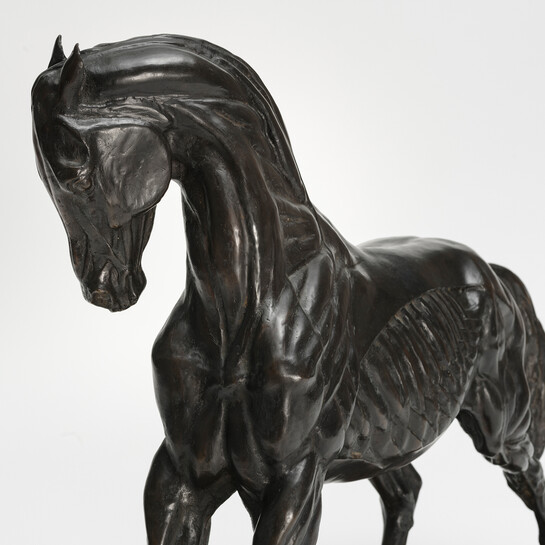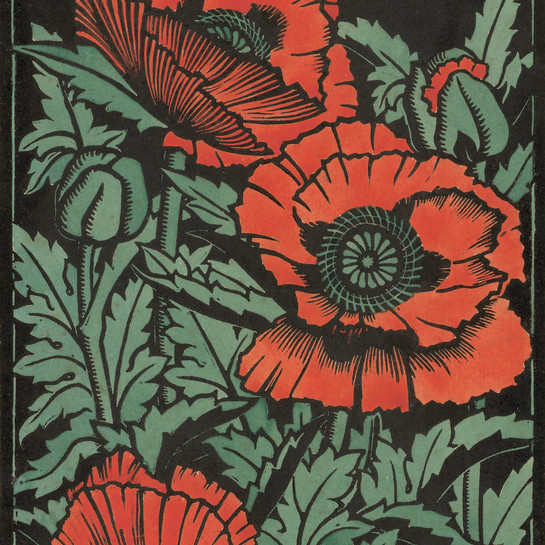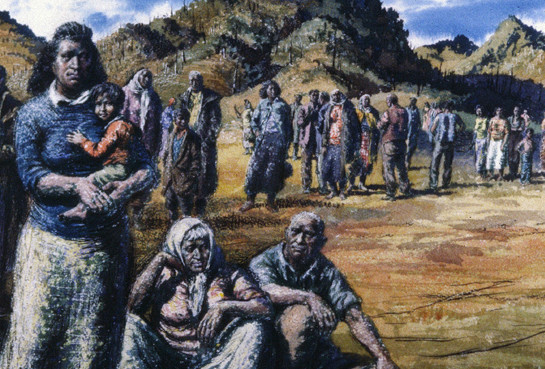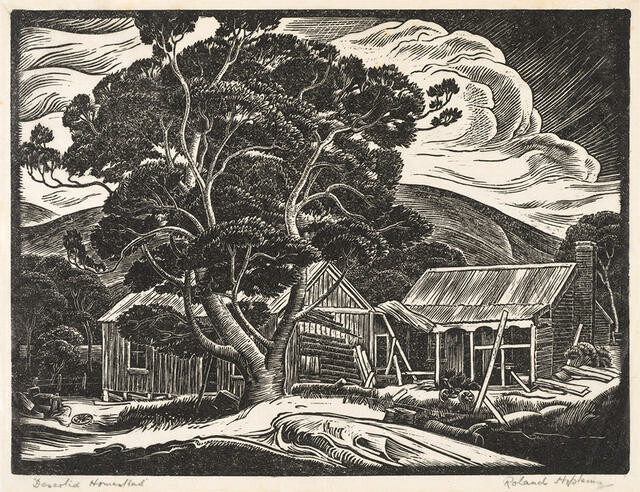Roland Hipkins
Aotearoa New Zealand, b.1895, d.1951
Deserted Homestead
- Linocut
- Presented by Mr F A Shurrock 1960
- 305 x 395mm
- 69/463
Tags: buildings (structures), chimneys (architectural elements), clouds, cottages, derelict buildings, hills, landscapes (representations), monochrome, trees
Like Shurrock, Roland Hipkins had also studied at the Royal College of Art in London and emigrated to Aotearoa New Zealand under the La Trobe scheme. Hipkins arrived in 1922 and was employed at the Napier Technical College where he actively romoted the use of the linocut medium. At the time, this was a relatively new print medium and, as can be seen with other examples included in this exhibition, was one that a younger generation of New Zealand artists such as Chrystabel Aitken, lorence Akins, Bill Sutton and Juliet Peter embraced.
(Dear Shurrie: Francis Shurrock and his contemporaries, 8 March – 13 July 2025)
Exhibition History
Ink on Paper: Aotearoa New Zealand Printmakers of the Modern Era, 11 February – 28 May 2023
Roland Hipkins worked with woodcuts as a student at the Royal College of Art in London in 1921 before immigrating to Aotearoa the following year to teach art at the Napier Technical College. He became a champion of the linocut here, encouraging its use by children and adult students alike. In 1929 Roland had an article published in Art in New Zealand encouraging artists to take up relief printing. He wrote: “The artist, ever ready to bring forth beauty, no matter how humble the means, has discovered the new medium in the use of linoleum.” He enjoyed the vitality, spontaneity and fluidity inherent in the linocut, the results of which can be seen here in Deserted Homestead.
Derelict farm buildings were a distinctive feature in the rural landscape of the 1920s and 1930s. They were the remnants of early colonial buildings that had been abandoned. Roland Hipkins wanted to portray ‘the spirit of the country’ in his work, believing it was a way of fostering national identity in art. Hipkins was a firm supporter of printmaking, particularly wood and line blocks. His detailed and careful use of line can be seen in this work. Born in Staffordshire, England, Hipkins studied at the Royal College of Art in London. In 1922 he emigrated under the La Trobe Scheme, which encouraged British art teachers to come to New Zealand. He took up a position teaching art at the Napier Technical College and in 1923 married the Scottish artist Jenny Campbell who was also based in Napier. In 1929 Hipkins began lecturing in art and craft at the Wellington Technical College. He retired to Napier where he helped to form the Napier Society of Arts and Crafts.
(Label date unknown)



